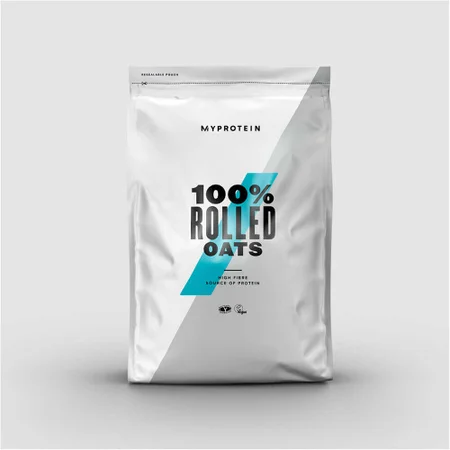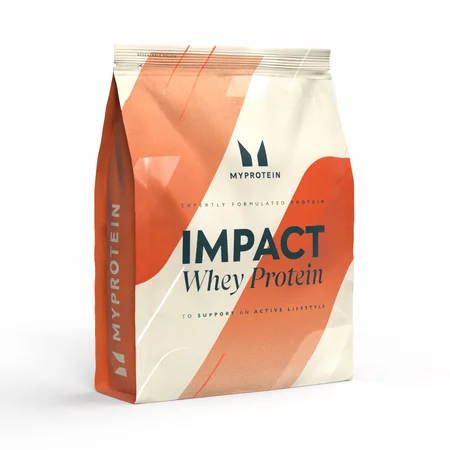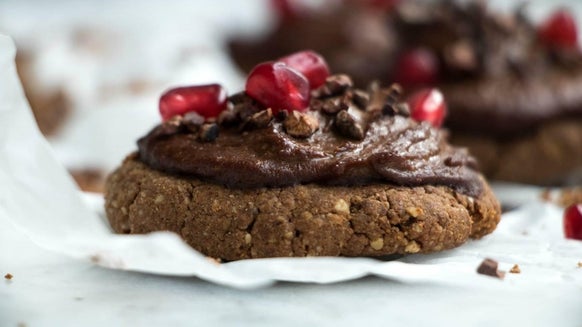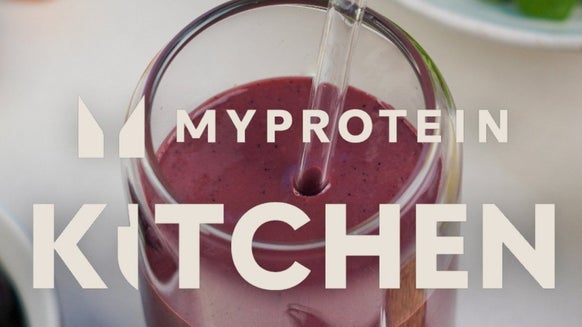How To Bulk Up Fast | As Proven By Science
Spring, summer, autumn, and bulking season — that sounds about right, yeah? Well, that’s the case for many fitness enthusiasts, who take advantage of these next few months to pack on some mass and bulk up.
As humans, we generally love food — so most of you should find the ‘eating a hell of a lot of food’ part of bulking rather enjoyable. And yes, if you up your calorie intake without going mad on the cardio, you will put on weight and increase fat mass, but is bulking that simple?
Here we’re going to give you some advice on how to bulk the correct way — that is with the goal of maximising muscle growth, whilst minimising fat gains. So, if you thought pizza, chips, and ice cream will be included in your diet — this is no dirty bulk!
In this article, you'll find:

1. Fuel your workout
Right, imagine you’ve just got into your car to head off on a wonderful adventure. Say this adventure only takes you around the corner — you’ll only need a little bit of fuel to get you there. But what if you’re driving right across the country? Then you’ll need a full tank of fuel to last the journey. Or, if you forgot to fuel up at all, you’ll end up getting out of the car and spending an unadventurous day sulking.
You probably know where we’re going with this — you’re the car, fuel is nutrition, and the journey is your workout. But how should you fuel when bulking?
What should I eat to bulk up fast?
Like we said, just because you’re bulking, it’s not an excuse to over-do it on the junk food and double your calorie intake – keep it clean for lean gains. We’re talking good quality sources of protein, such as chicken breasts, fish, eggs, and plain yoghurt — these are rich in essential amino acids, which are needed to build new muscle proteins.1
The amino acid which is deemed most important for building muscle is leucine — a branched chain amino acid. Leucine is the best stimulator of the metabolic pathway that leads to the production of new muscle proteins — it’s basically the ‘on switch’.2 It’s recommended that you consume 50 mg per kg of body mass of leucine daily, which can be achieved through your diet (chicken, tuna, and tofu are good options) or a supplement (whey protein has the highest leucine content).3
You also need a good amount of carbohydrates to recover properly from your workout. Carbohydrates are mainly stored in the body as muscle glycogen and are the main fuel source used during exercise. After your workout, your muscle glycogen stores need topping back up to make sure you’re ready for the next session — eating carbs is the way to do this.4 Good options include:
- Whole-wheat pasta
- Rice
- Potatoes & sweet potatoes
- Wholemeal bread
- Oats
- Fruit
Fats are the most energy-dense macronutrient, packing in 9 calories per gram — that’s more than twice that of protein and carbs. So, increasing your fat intake is an easy way to boost your calorie intake and enter a caloric surplus. BUT, this also means it’s easy to go overboard and consume too many calories from fats — so portion control is key. Opt for ‘good fats’ (mono- and poly- unsaturated fats) such as:
- Nuts & nut butters
- Seeds
- Avocado
- Oils
- Dairy products
Amidst all of this, don’t neglect your micronutrients — vitamins and minerals are essential for overall health, so make sure to eat a variety of fruit and veg in your diet.
When to eat for bulking?
In order to bulk up and gain lean muscle mass, you need to be in a state of positive nitrogen balance — this is when muscle synthesis (building) is greater than muscle breakdown. To do this, try to eat some protein (about 20 g) every 3-4 hours — key times are with breakfast, post-workout, and before bed.5 This could be made up of three meals, plus a few snacks or shakes in between.
Like we said, carbohydrates are the main energy source you use for day-to-day life, as well as exercise, so ideally you want to be eating carbs throughout the day. Since carbohydrates play a key role in exercise recovery — by replenishing muscle glycogen stores — it’s important to get some carbs in after your session.4 This could be as simple as having a glass of milk, or even better, shake it up with some protein powder and tick off two nutrition goals in one.
Still, be sensible with your carb intake and switch up the quantity depending on how much training you’ve done. If it’s a rest day, you won’t need as many carbs (or total calories) compared to on a heavy training day. As a guide, keep your carb intake around 3 g per kg of body weight on rest or light-training days (that’s about 240 g if you weigh 80 kg, for example) and increase to meet the demands of your training.6
Track your progress and see how your body is responding to the food you’re eating, but remember, bulking isn’t a race.
How to bulk up fast with supplements
Supplements aren’t essential for a bulk, but they can help make the process easier for you. They’re convenient for when you’re busy on the go, easy for meeting your requirements, and fast if you can’t be bothered to cook! When it comes to bulking season, here are the best supplements to try:
- Protein powders – whey, casein, soy, pea etc.
- Protein bars
- Peanut butter
- Creatine
- Leucine
- Mass gainers (carbohydrate and protein blends)
- Caffeine – for a pre-workout boost

2. Tailor your training to bulk
Now that you’ve got the diet nailed, what about your training? It’s good to mix up your workouts so your body doesn’t get too used to doing the same thing. Giving your muscles a new stimulus by changing the exercise type, intensity, or duration will make them adapt, evolve, and grow.
Ever done weight training on a muscle you forgot you had and the next day it feels on fire? Well you’ll probably notice the next time you train that muscle, it won’t be so sore afterwards — this is due to ‘training adaptations’ and is important during bulking.
With that in mind, here are some exercises that are great to help you bulk up and start building muscle— remember to mix it up:
- Compound exercises (squats, deadlifts, bench press)
- Resistance exercises
- Calisthenics (pull-ups, press-ups, triceps dips etc.)
- HIIT (high intensity interval training)
- Full-body workouts
- Steady-state cardio
Yes, you heard it right. Cardio is important for maintaining cardiovascular health and overall fitness, so even when you’re bulking, you should fit in a few sessions a week. Don’t go too crazy though – cardio can burn a lot of calories, so make sure you fuel up well)
3. Recover properly
You may be thinking “the more you train, the more you gain”, but this is a great misconception. In fact, failing to recover properly from your workouts or ‘overtraining’ could actually hinder the bulking process.
When you perform resistance training, your muscle fibres are damaged — they stretch, tear, and are broken down. It’s during the recovery process that your muscles repair and re-build — growing bigger and stronger — making exercise recovery a key part of bulking successfully.7
Most of us associate bulking with lifting heavier weights or performing more reps. Overall tougher sessions to drive your muscles to grow. Well, poor recovery could stop you from doing this.
In a study of resistance-trained males, none of them were able to achieve their 10 rep max (maximum weight lifted for 10 reps) across 8 exercises after only 24 hours of recovery. Even after 4 days of rest, only 80% of participants could hit their 10 RM.8
Give yourself a few days of rest before training the same muscle group to reap the full bulking benefits of the session. Plus, you put yourself at greater risk of injury, so don’t push too hard too soon.
Of course, don’t forget nutrition — you want to get some carbs back into your muscles within 30 minutes after your session. As for protein, you’ve got a larger window — the 2 hours after your workout is the best time to eat protein to optimise muscle growth.9
4. Sleep – it’s important
Getting enough sleep is important for your overall health and well-being. A bad night’s rest, or continuously getting too little sleep can have negative effects on your physiological and cognitive function — and won’t do your bulk any favours either.10
During non-rapid-eye-movement (NREM) sleep — this is when you’re asleep, but not dreaming — your body releases growth hormone. As the name would suggest, this hormone is involved in tissue growth and repair. You also release anabolic (building) hormones during NREM, which prevent the breakdown of muscle proteins and help you keep your muscle mass.11
When you’re bulking, you want to make sure there’s enough growth and anabolic (muscle building) hormones hitting your muscles by getting enough NREM sleep — at least 7 hours a night should do it.
Take home message
There’s more to bulking than eating what you want, when you want. To bulk properly and see the best results, you need to get the basics right first. Follow these steps, take it slow, and see where your bulking journey can take you — there’s more to gain than just muscle mass. If you like it simplified:
Train. Eat. Rest. Sleep. Repeat.











